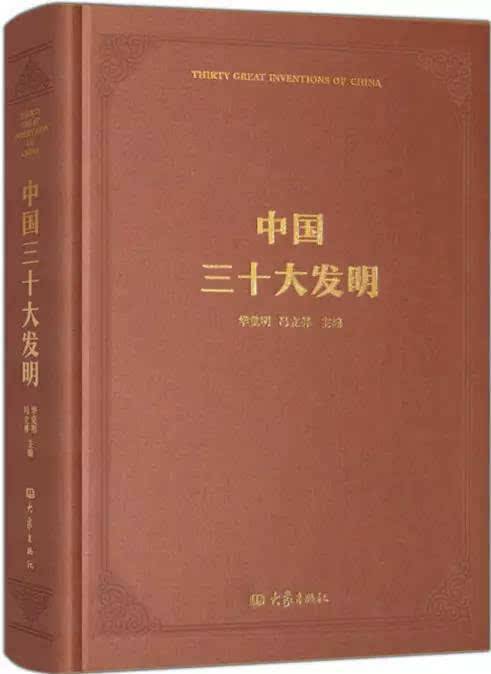From “four” to “thirty” great inventions

Thirty Great Inventions of China
Editors in chief: Hua Jueming and Feng Lisheng
Publisher: Elephant Press
When focusing on the great inventions of ancient China, most people will think of the Four Great Inventions: papermaking, printing, gunpowder and compass. While the inventions indeed contributed greatly to world historical progress, the concept of “Four Great Inventions” was in fact a concept introduced by Western scholars on the influence of the four inventions on modern civilization, and they failed to comprehensively cover significant inventions and technological conventions in China.
Thirty Great Inventions of China totals 500,000 words with 600 drawings and 34 essays. It begins with Hua Jueming’s summary on the thirty great inventions that elaborates on the identification and classification of inventions and the selection of great inventions. Hua defines “inventions” as “the original techniques and methods that can recognize, adapt to and change nature, society and the people.” Apart from Hua’s overview, the other 33 essays respectively elaborate on the 30 great inventions from ancient to the modern times, including: cultivation of millet and wheat, silk textiles, Chinese characters, the decimal system, rod calculus, bronze metallurgy, iron and steel smelting technology based on pig iron, canal and navigation locks, plough and animal-drawn seed ploughs, water wheels, painting techniques, paper making techniques, Chinese medicine, variolation, porcelain, Chinese timber architecture, Chinese cooking, Chinese horse-riding and stirrups, printing, tea planting and production, acacia and abridged armilla, watertight bulkheads, powder, compass, deep-drilling exploration, ecological agriculture with intensive cultivation, calculation with abacuses, fermentation with moldy germinative grain, the blunderbuss and rocket, artemisinin and hybrid rice.
By analyzing great inventions in Chinese history, it can be seen that the Chinese people’s creativity differed greatly in various historical periods. In general, during the mid to late Neolithic age, a great invention emerged every millennium; In the Xia, Shang and Zhou dynasties, a great invention occurred every 450 years. The Han Dynasty had the most great inventions: every 45 years, there was a great invention. In the Wei, Jin and Northern and Southern dynasties the number of inventions dropped to a new low: only one great invention appeared during the 370-year reign.
Later in the Sui and Tang dynasties, every 75 years witnessed the emergence of a great invention, while the following Song and Yuan dynasties was the peak for technology and science in ancient China and about every 65 years a great invention came out. The Ming Dynasty however, did not continue the previous trend: technological culture was declining and a great invention emerged every 140 years. The following Qing Dynasty had no great inventions. China in modern times had two great inventions within a hundred years.
Of course, this analysis is not an accurate estimation of Chinese people’s creative capacity because only great inventions are taken into account but not scientific breakthroughs. For example, Liu Hui in the Three Kingdoms period and Zu Chongzhi in the Northern and Southern Dynasties, who both contributed greatly in mathematics, are not discussed.

 PRINT
PRINT CLOSE
CLOSE